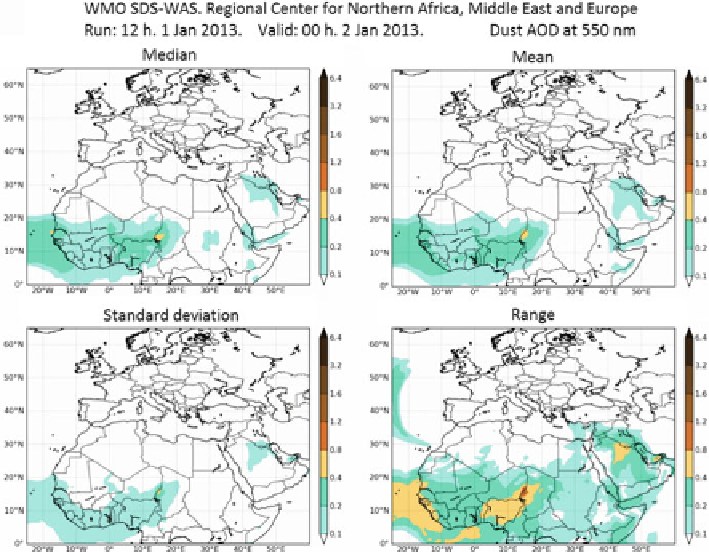Geoscience Reference
In-Depth Information
Fig. 10.3
Example of multi-model products issued by the WMO SDS-WAS Regional Center NA-
ME-E: dust optical depth at 550 nm wavelength forecast for 2 January 2013. The
top two panels
describe centrality (multi-model median and mean), and the
bottom two panels
describe spread
(standard deviation and range of variation)
centres with multi-annual experience in assimilation, it was a natural development to
extend the system to include observations relevant to dust, and aerosols in general,
in an effort to initialise the model also for these additional variables. Nowadays,
most operational centres with aerosol forecasting capabilities run systems which
include an aerosol analysis. While the general assimilation tools can be ported in
a straightforward manner to any variable, there are some specific challenges in
dust/aerosol assimilation which are mainly related to the paucity of suitable dust
observations available for assimilation and the complexity of extracting specific
dust signals from satellite radiances which are affected by all aerosol species
and other atmospheric quantities. Moreover, due to the complex radiative transfer
calculations needed to model aerosol-affected radiances from the visible channels
products (e.g. aerosol optical depth, AOD) rather than the raw observations. Even
this approach has its limitations as AOD observations from sensors with visible
channels are not available over bright surfaces such as deserts. This is, for example,
the case for the standard AOD data from the MODIS sensor on board of the NASA
of near real-time information for the systems with assimilation capabilities.

Search WWH ::

Custom Search